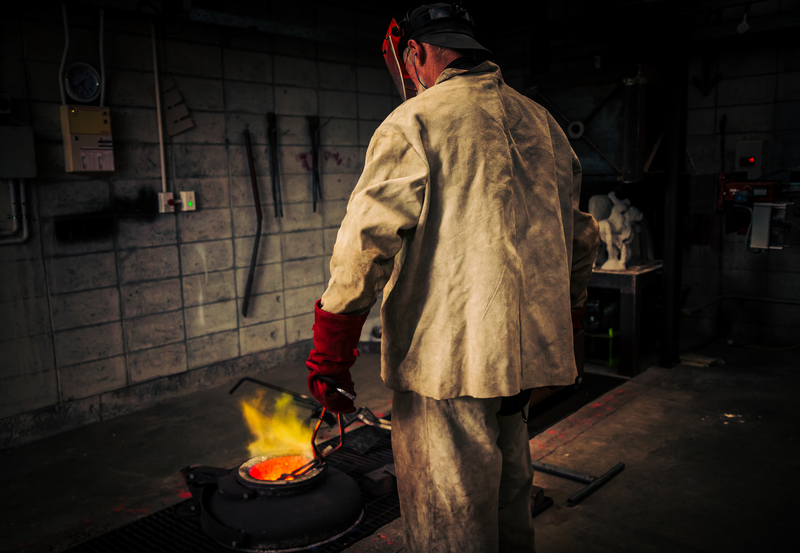At the very least, in a survival situation, if you had to barter for metal work, understanding the basic dynamics of the craft will help you avoid getting cheated.
Understanding how to melt and work with metal will also provide you with a foundation of knowledge should you ever be faced with a situation where you had to work with it to make tools or building components.
Things You'll Need
• Brass scrap or ingots
• Carbon fiber/Kevlar gloves
• Rubber apron
• Tinted protective eyewear
• Welding apron
• Leather workbooks
• Metal furnace
• Charcoal (optional)
• Clay/graphite crucible
• Long metal tongs
• Pouring shank
• Metal moldInstructions:
• Eliminate all non-brass parts from your brass items.
• Take all of your materials outside. Start your metal furnace by igniting the charcoal or pilot light of the gas line. Let the furnace heat until it is glowing red. Keep a bucket of water and a fire extinguisher nearby as you may need it in case of emergency flare-ups after the furnace fire starts to heat up.
• Load the crucible with the brass that you would like to melt down. Use a crucible that is made from a clay-graphite mix, as metal crucibles may melt during the process. Lower the crucible into the furnace with a pair of tongs. Use long-handled tongs made for metal casting. Place the lid on the furnace.
• Let the furnace heat the brass. Remove the lid with the tongs to check on the brass periodically. Stoke the fire with charcoal if needed. Remove the crucible with a pouring shank after the brass has started to smoke and is glowing bright red.
• Pour the brass into your mold. Fill the mold quickly so the brass will not cool before it is inside the mold.
Brass can be used as a building material or for trading for items you need in a survival situation.
It heats at a relatively low temperature so is easy to melt.
You will need to use common sense, though, when handling fire, molten brass and red hot tools. Use your head and make sure you do not become a statistic.
To learn more about metal working and melting brass and other metals, please visit eHow.
